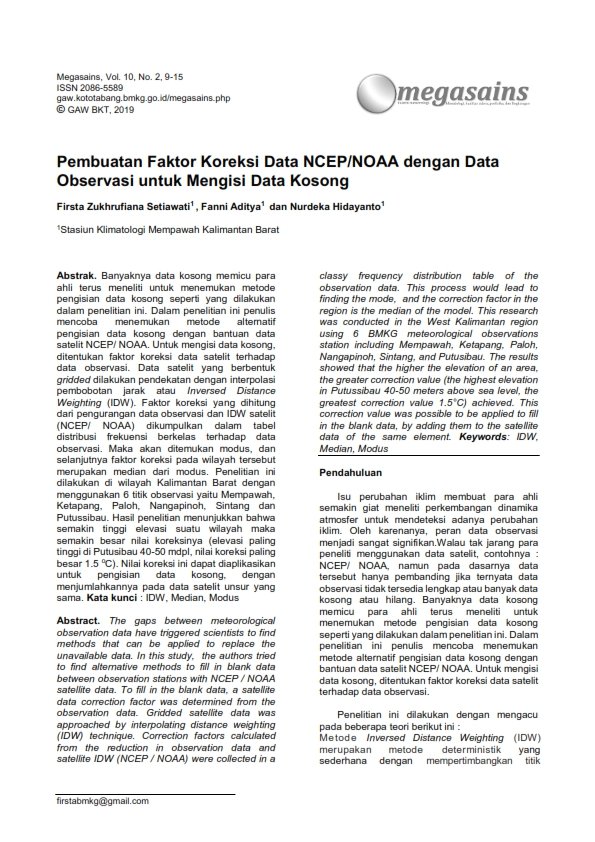Pembuatan Faktor Koreksi Data NCEP/NOAA dengan Data Observasi untuk Mengisi Data Kosong
Main Article Content
Abstract
The gaps between meteorological observation data have triggered scientists to find methods that can be applied to replace the unavailable data. In this study, the authors tried to find alternative methods to fill in blank data between observation stations with NCEP / NOAA satellite data. To fill in the blank data, a satellite data correction factor was determined from the observation data. Gridded satellite data was approached by interpolating distance weighting (IDW) technique. Correction factors calculated from the reduction in observation data and satellite IDW (NCEP / NOAA) were collected in a
classy frequency distribution table of the observation data. This process would lead to finding the mode, and the correction factor in the region is the median of the model. This research was conducted in the West Kalimantan region using 6 BMKG meteorological observations station including Mempawah, Ketapang, Paloh, Nangapinoh, Sintang, and Putusibau. The results showed that the higher the elevation of an area, the greater correction value (the highest elevation in Putussibau 40-50 meters above sea level, the greatest correction value 1.5°C) achieved. This correction value was possible to be applied to fill in the blank data, by adding them to the satellite data of the same element.
Article Details

This work is licensed under a Creative Commons Attribution-NonCommercial 4.0 International License.
The author is willing to retain the copyright and grant journal rights to the first publication with works that are simultaneously under license the Creative Commons Attribution-NonCommercial-NoDerivatives 4.0 International. It allowing the others to share the work with recognition of the author's work and the initial publication in this journal.
Authors can enter into separate additional contractual arrangements for the non-exclusive distribution of published versions of journal works (for example, posting them to institutional repositories or publishing them in a book), with recognition of the initial publications in this journal.
Authors are permitted and encouraged to send their work online (for example, in their institutional repositories or websites) before and during the submission process because it can lead to productive exchanges, as well as previous and larger citations of published works.

